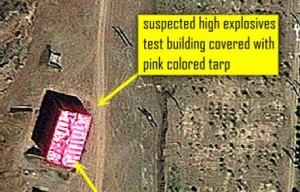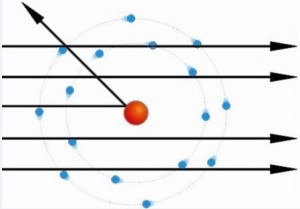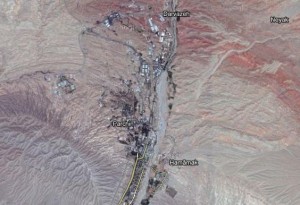Where Are the Dirt Photos? We Must Have Dirt Photos!
As I have noted many times, there is a prescribed, choreographed sequence for getting reports of “cleanup” activities at Iran’s Parchin site into the US news media. First, “diplomats” release information (arising from intelligence agencies or the IAEA) to George Hahn of AP or Fredrik Dahl of Reuters, and then David Albright emerges within just a few hours with an “analysis”, usually including satellite imagery. The choreography and imagery reached a comedic highpoint when Iran covered a number of buildings at the Parchin site with pink tarps last summer. Once Albright provides his viewpoint, various US media chime in to tell us how devious the Iranians are being with this military site that might house work that could somehow, one day, sort of help Iran produce a nuclear weapon.
Now, however, the cycle appears to have been broken. Late Wednesday, Fredrik Dahl published an article where he reported that a “closed-door” IAEA briefing had disclosed that satellite images of Parchin dated November 7 found new piles of dirt. Whether due to the Thanksgiving holiday or a lack of enthusiasm after the embarrassment of the pink tarp photos, Albright has not yet followed up by publishing these all-important photos of the piles of dirt.
Here is Dahl’s report:
Iran has been hauling dirt to a military site U.N. nuclear inspectors want to visit, Western diplomats said on Wednesday, saying the findings were based on satellite images and they reinforced suspicions of a clean-up.
They said the pictures, presented during a closed-door briefing for member states of the International Atomic Energy Agency (IAEA), suggested Iran was continuing to try to hide incriminating traces of any illicit nuclear-related activity.
The allegations come a few days after the IAEA said in a report on Iran that “extensive activities” undertaken at the Parchin site since early this year would seriously undermine its inquiry, if and when inspectors were allowed access.
Albright clearly was already aware of the new piles of dirt. From his comments (pdf) put up along with publication of the November 16 IAEA report (pdf) (clearly marked “Restricted Distribution”):
The third and final points about removal of external pipework from the containment vessel building and about a depositing of new earth where earth was removed are new observations and ones that were not previously reported by ISIS. (See previous ISIS imagery analysis on the apparent sanitization activities at Parchin here.) Iran undertook sanitization activities, including the removal of earth and deposit of new earth, at Lavisan Shian in 2004. These activities are suspected to be related to Iran hiding evidence of efforts of the Physics Research Center, a military entity linked to parallel military nuclear activities that was sited there until the late 1990s.
On the date that the IAEA provided for restricted distribution its latest report on Iran, Albright was already aware that new imagery showed the additional fill dirt being brought to the Parchin site, and yet more than ten days later, and nearly a week after being prompted by Dahl, Albright still has not given us the dirt photos. If he doesn’t come around soon, Albright will be in danger of being left out of the noise amplification loop and in the future new photos will bypass him and go directly to Barbara Starr.
Update: Ha ha ha ha. I guess George Jahn was feeling left out. He just published a diagram proving that the Iranians can calculate the yield of an atomic weapon. Quick! Prepare the fainting couch! Even Albright wasn’t too impressed with this one, as quoted by Jahn:
David Albright, whose Institute for Science and International Security is used by the U.S. government as a go-to source on Iran’s nuclear program, said the diagram looks genuine but seems to be designed more “to understand the process” than as part of a blueprint for an actual weapon in the making.
I’m sure Barbara Starr will be along shortly to tell us how frightened we should be by this diagram.



